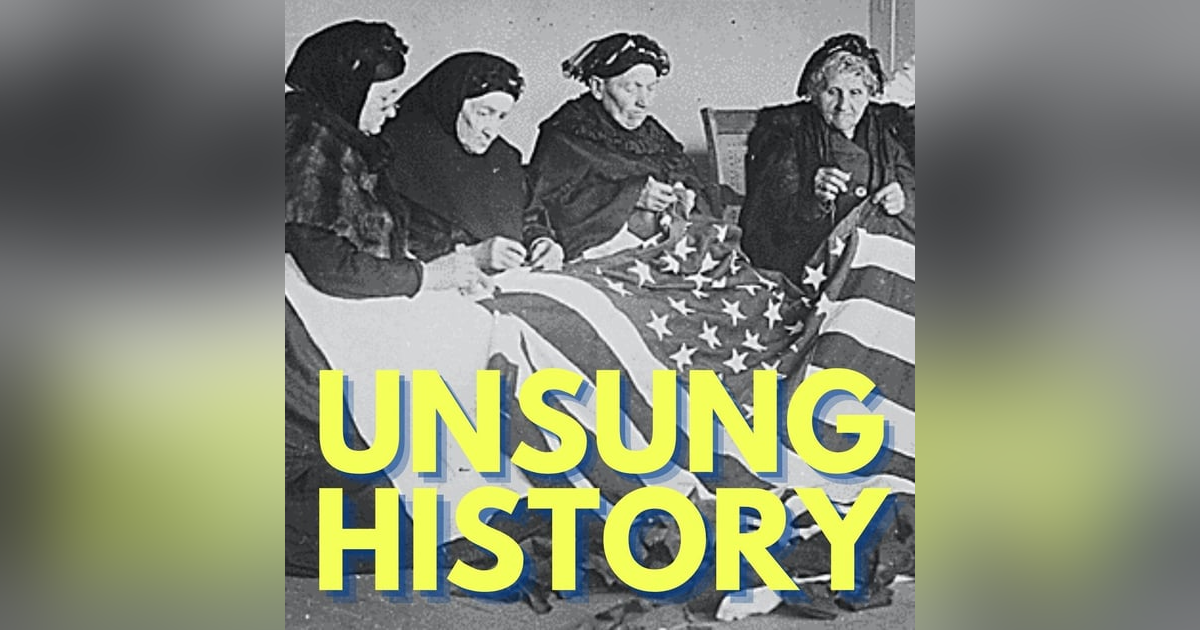Plantation owners in the Southern United States regularly furnished their enslaved workers with goods – clothing, shoes, axes, and shovels, that had been manufactured in the North. Many Northern manufacturers specifically targeted the Southern plantation market, enticed by the prospect of selling cheap goods on a regular schedule. While in some cases the Northern manufacturers supported surprising politics – joining the Republican Party and donating to Abolitionist causes – they had no qualms about making their money in an industry adjacent to the slave economy. Joining me in this episode is Dr. Seth Rockman (https://history.brown.edu/people/seth-e-rockman) Associate Professor of History at Brown University and author of Plantation Goods: A Material History of American Slavery (https://bookshop.org/a/34046/9780226723457)
Our theme song is Frogs Legs Rag (https://incompetech.com/music/royalty-free/index.html) composed by James Scott and performed by Kevin MacLeod, licensed under Creative Commons. The mid-episode music is “Relaxing Enchanted Piano (https://pixabay.com/music/modern-classical-relaxing-enchanted-piano-264401/)” by Mikhail Smusev (https://pixabay.com/users/sigmamusicart-36860929/?utm_campaign=music&utm_content=264401&utm_medium=referral&utm_source=link-attribution) from Pixabay (https://pixabay.com//?utm_campaign=music&utm_content=264401&utm_medium=referral&utm_source=link-attribution) and is used under the Pixabay Content License (https://pixabay.com/service/license-summary/) The episode image is “Brogans, Manufacturer Little & Co., third quarter 19th century (https://www.metmuseum.org/art/collection/search/158071),” Brooklyn Museum Costume Collection at The Metropolitan Museum of Art, Gift of the Brooklyn Museum, 2009; Gift of Herman Delman, 1955; image is in the public domain.
Additional sources:
“In order to understand the brutality of American capitalism, you have to start on the plantation (https://www.nytimes.com/interactive/2019/08/14/magazine/slavery-capitalism.html),” by Matthew Desmond, The New York Times Magazine, August 14, 2019.
“Industrialization and Conflict in America: 1840–1875 (http://www.metmuseum.org/toah/hd/indu/hd_indu.ht),” by David Jaffee, Heilbrunn Timeline of Art History. New York: The Metropolitan Museum of Art, 2000–.
“8. The Market Revolution (https://www.americanyawp.com/text/08-the-market-revolution/),” The American Yawp.
“Industry and Economy during the Civil War (https://www.nps.gov/articles/industry-and-economy-during-the-civil-war.htm),” by Benjamin T. Arrington, National Park Service.
“In search of slave clothes: A museum director’s hunt for a painful symbol (https://www.washingtonpost.com/local/in-search-of-slave-clothes-a-museum-directors-hunt-for-a-painful-symbol/2012/01/12/gIQAI1BPEQ_story.html),” by J. Freedom du Lac, The Washington Post, January 20, 2012.
“Antebellum Tariff Politics: Regional Coalitions and Shifting Economic Interests (https://www.jstor.org/stable/10.1086/590131),” by Douglas A. Irwin, The Journal of Law & Economics 51, no. 4 (2008): 715–41.
Advertising Inquiries: https://redcircle.com/brands (https://redcircle.com/brands)
Episode link: https://play.headliner.app/episode/24279384?utm_source=youtube
(video made with https://www.headliner.app)

















